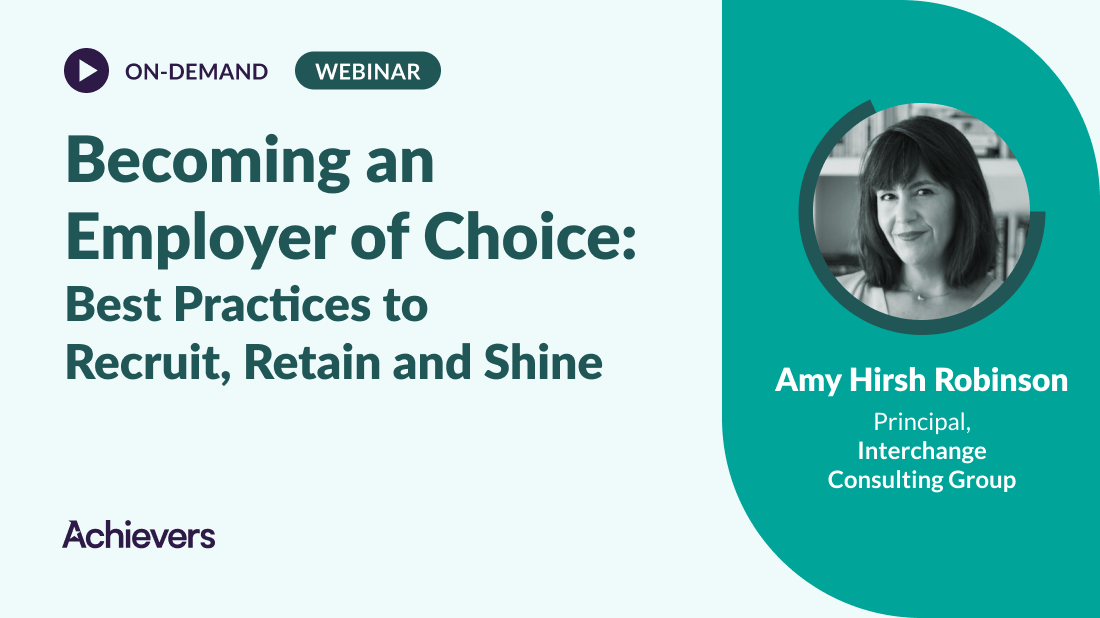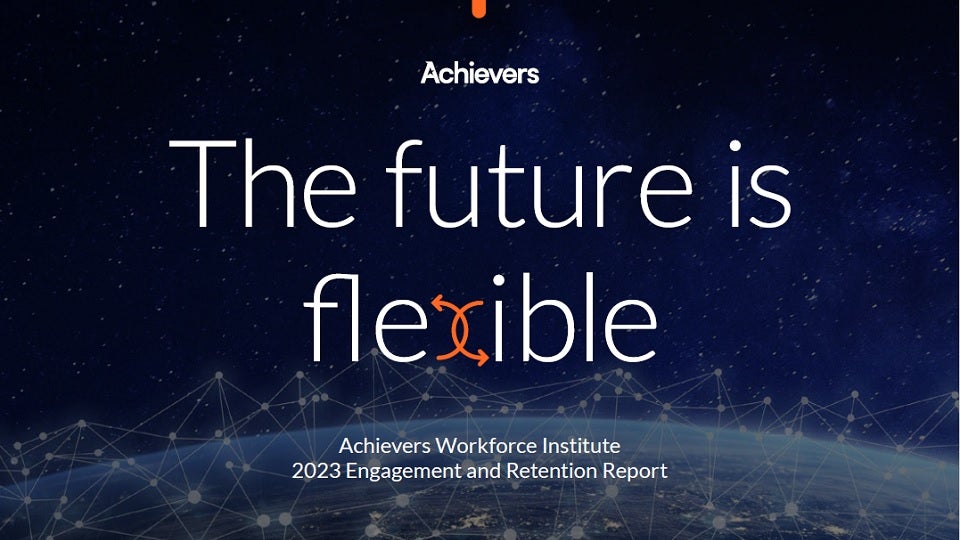Create a culture that means business™
Email address
Every organization succeeds or fails based on the skills and engagement of its workforce. Highly motivated, innovative, experienced employees will consistently outperform the competition and drive increased revenue. Disengaged employees who lack the qualifications needed for their role – or who are a poor fit for your organizational culture – will instead contribute little before looking for opportunities elsewhere.
Most companies make some effort to align recruitment with anticipated needs, develop a sizable talent pool, and position their organization as an attractive place for candidates to join. But has your business identified the most effective recruitment channels, created a consistently great candidate experience, or fully developed and leveraged its employer brand? If you want to realize the benefits of an effective employee recruitment program at your organization, read on for a comprehensive guide to the types, stages, channels, and strategies involved in employee recruitment.
What is employee recruitment?
Employee recruitment is the strategic process through which organizations seek, attract, and hire qualified individuals to fill vacant positions. It encompasses a range of activities aimed at identifying and engaging potential candidates who possess the necessary skills, experience, and characteristics. Recruitment is an essential part of building a team capable of driving innovation, achieving organizational goals, and sustaining long-term success.
Effective employee recruitment requires developing and implementing strategies to entice suitable candidates to join your company. It involves more than posting job listings and reviewing applications, incorporating techniques like building a compelling employer brand, focusing on the candidate experience, and using the right recruitment channels. Organizations with successful recruitment strategies also look beyond immediate staffing needs to anticipate and meet market trends. Perhaps most importantly, they seek to develop a workforce that aligns with the company’s values, culture, and mission.
There are two fundamental types of employee recruitment: finding new candidates internally and sourcing them from outside your organization.
Internal recruitment
Internal recruitment involves identifying and promoting talent from within your organization to fill open positions. This streamlines the onboarding process by leveraging existing employees’ knowledge of company culture and processes. Internal recruitment is a key part of any successful professional development strategy, establishing career paths for every employee at your company. It also rewards loyalty and enhances employee motivation.
External recruitment
External recruitment focuses on sourcing candidates from outside your company to bring in fresh perspectives, skills, and experiences. It’s particularly useful when seeking specialized expertise or when the internal talent pool is limited. External recruitment strategies can involve online job postings, professional networking events, and partnerships with recruitment agencies to attract specialized candidates.
Why organizations need to prioritize employee recruitment
Employee recruitment is a major driver of sustained organizational success and growth. It has a direct impact on the quality of your workforce and delivers a variety of other key benefits:
- Improved talent pool. Employee recruitment efforts widen the pool of potential candidates, allowing organizations to more easily find the candidates they need while tapping into more diverse skill sets and perspectives.
- Enhanced productivity. Bringing in qualified and motivated individuals enhances team productivity and fosters a culture of excellence.
- Innovation and creativity. A diverse and skilled workforce fosters innovation and creativity, helping your organization stay ahead in a rapidly changing business environment.
- Stronger employer brand. A positive recruitment experience and a strong employer brand attract top talent and create a better perception of your company among candidates and the public at large.
7 stages of employee recruitment
The employee recruitment process involves seven key stages, each of which plays a key role in attracting and hiring the right talent.
1. Identifying a vacancy
Employee recruitment begins with identifying a vacancy within your organization. The vacancy may have arisen due to organizational expansion, turnover, the creation of a new position, or other factors. During this stage, your company should conduct a thorough analysis to define the roles, responsibilities, and qualifications required for the vacant position. Clear communication between the hiring manager – or other staff member in charge of the hiring process – and other relevant stakeholders ensures that everyone is on the same page and has a comprehensive understanding of current staffing needs.
2. Developing the job description
Once the job vacancy is identified, it’s time to craft a detailed job description. This document outlines the essential duties, qualifications, skills, and other relevant information about the position. A well-constructed job description helps attract qualified candidates and serves as a key reference point for both recruiters and applicants throughout the hiring process. Organizations should clearly and accurately define the job’s requirements and give a full picture of the type of company and culture candidates would be joining.
3. Advertisement and promotion
After finalizing the job description, organizations must advertise it. This involves disseminating information about the job vacancy through various channels, like online job boards, company websites, social media platforms, and industry-specific publications. Your company should prioritize the channels that are most popular with the types of applicants you’re seeking. Crafting compelling and inclusive advertisements is essential for attracting a diverse and qualified pool of candidates. The goal is to reach a wide audience while ensuring that your messaging accurately reflects your company culture and values.
4. Reviewing applications
As applications start coming in, the recruitment team begins to review them. After carefully assessing resumes, cover letters, and other submitted materials, they can shortlist candidates who closely match the specified criteria. Your company should consider leveraging applicant tracking systems during this process so nothing falls through the cracks and your hiring team can efficiently identify the most relevant applications.
5. Conducting interviews
Shortlisted candidates are then invited to participate in interviews, which can take various forms, including phone screenings, video interviews, and in-person meetings. The interview stage is a crucial opportunity to assess candidates’ communication skills, cultural fit, and how their experiences align with job requirements. It’s also a chance for candidates to gain insights into your organization and determine if the position aligns with their career goals.
6. Reference checking and background verification
Following successful interviews, the recruitment process moves to the reference checking and background verification stage. This involves contacting the candidate’s previous employers or other provided references to validate the information provided by the candidate and further evaluate them. Organizations might also conduct a thorough background check to ensure that the candidate meets their ethical and legal standards.
7. Job offer and onboarding
The final step in the employee recruitment process is making the job offer and onboarding your company’s new team member. Once a suitable candidate has been identified and passed all necessary checks, the organization extends a formal job offer. The offer should include details about compensation, benefits, and other relevant terms of employment. Upon acceptance, the new employee undergoes the onboarding process with the goal of integrating them into the organization and providing them with the information and resources needed for a smooth transition.
Employee recruitment techniques
Modern employee recruitment initiatives involve a wide range of channels and techniques to reach candidates. Here are some of the most effective.
Online job boards
Online job boards are digital platforms that allow employers to post job openings, reaching a wide audience of job seekers. These platforms, such as LinkedIn, Indeed, and Glassdoor, provide a centralized space for both employers and candidates to connect. They are particularly useful for organizations aiming to cast a broad net and attract a diverse range of applicants. Online job boards offer features like resume databases, targeted job promotion, and applicant tracking systems that can streamline the recruitment process.
To make the most of online job boards, organizations should craft compelling and detailed job postings. A well-written description that highlights the company culture, benefits, and growth opportunities has a better chance of attracting top-tier candidates. Recruiters should also leverage the platform’s search and filtering tools to efficiently screen and shortlist candidates based on specific criteria. Engaging with the platform’s community through employer branding initiatives, like sharing company updates and participating in relevant discussions, can enhance the organization’s visibility and attractiveness to potential candidates.
Social media recruiting
Social media platforms like LinkedIn and Facebook have become important channels for recruitment. These platforms offer a unique opportunity to connect with passive candidates, showcase the company culture, and share engaging content. Social media recruiting is particularly effective for building and promoting your organization’s employer brand. Your company can improve its brand by sharing employee testimonials, behind-the-scenes content, and industry insights. And investing in targeted advertising on social media platforms can enhance the visibility of job postings to specific demographics, ensuring that the right candidates come across them.
Reverse recruiting and executive searches
Reverse recruiting is a paradigm shift where the focus is on employers actively seeking out potential candidates who may not be actively looking for new opportunities. It requires building relationships with passive candidates through networking, social media, and industry events. Reverse recruiting aims to attract individuals with valuable skills and experience who may not be visible through traditional recruitment channels, and it can be particularly effective in competitive industries where top talent is often already employed.
An executive search is a subset of reverse recruiting that involves hiring professionals with specialized skills or leadership experience directly from organizations in related industries. It’s typically used for filling high-level or niche positions where the best talent may not actively seek new opportunities. Organizations should collaborate with reputable executive search firms or build an in-house team with industry expertise. Executive search firms leverage their industry knowledge and extensive networks to identify and approach candidates discreetly. Maintaining confidentiality during the process is essential to respect the privacy of both candidates and the hiring organization.
Employee referral programs
Employee referral programs leverage the networks of current team members to identify potential candidates. With their on-the-job experience and knowledge of organizational culture, employees are perfectly positioned to recommend individuals who possess the necessary skills and are great cultural fits. When implementing referral initiatives, organizations should establish guidelines that clearly communicate the types of positions eligible for referral, the criteria for successful referrals, and the associated incentives. This helps encourage employees to actively participate in the referral process and sustain lasting employee engagement in recruitment efforts.
Professional networking events
Professional networking events, such as industry conferences, seminars, and workshops, are great opportunities for your company to connect with and assess potential candidates while making beneficial contacts in its industry. Organizations should identify key events relevant to their field, prepare relevant promotional materials, and actively engage with attendees. Participating in panel discussions or workshops and hosting networking sessions are also effective ways to enhance visibility and boost your organization’s brand. Finally, your organization’s representatives should follow up with the contacts they make to build and maintain these key relationships.
Talent acquisition software
Talent acquisition platforms are designed to streamline the recruitment process. These solutions provide a centralized hub for managing candidate pipelines, automating administrative tasks, and enhancing collaboration among hiring teams. Talent acquisition software is most valuable for organizations handling high volumes of applications or those seeking to optimize and standardize their recruitment workflows.
Organizations should invest time in configuring the system to align with their specific recruitment needs. This includes setting up customizable workflows, defining key metrics for performance tracking, and integrating the software with other HR systems, like recognition platforms and feedback-focused voice of the employee solutions. Train recruiters and hiring managers on the software as well so they can take full advantage of its features.
Diversity and inclusion initiatives
Diversity and inclusion initiatives seek to create a workforce that reflects a broad range of backgrounds, experiences, and perspectives. This approach brings tangible benefits to organizations, including improved creativity, engagement, and a more widespread sense of belonging. Diversity recruitment strategies may involve partnerships with diversity-focused job boards, outreach to underrepresented communities, and proactive efforts to eliminate bias from the hiring process.
To implement successful diversity and inclusion initiatives, organizations should conduct a thorough assessment of their current practices and work environment. Establishing diversity goals and metrics, promoting a culture of inclusion, and providing diversity training for hiring teams are essential steps. Actively participating in diversity events, supporting employee resource groups, and showcasing diversity in marketing materials contribute to these recruitment initiatives and boost your organization’s employer brand. Your company should also regularly evaluate and adjust these initiatives to maintain progress and realize its commitment to creating an inclusive workplace.
Recruitment agencies
Recruitment agencies – also called staffing or employment agencies – specialize in connecting employers with potential candidates. These firms often have industry-specific expertise and maintain a pool of pre-screened candidates, making them a valuable resource for organizations with urgent hiring needs or those seeking specific skill sets. Recruitment agencies can provide a range of services, from temporary staffing solutions to permanent placements.
Companies should carefully choose agencies that align with their industry and hiring requirements. They should also clearly communicate expectations, including timelines, candidate qualifications, and any unique aspects of their organizational culture. Certain agencies may be willing to engage in contingency recruiting, only being compensated upon successful placement of a candidate.
4 strategies for employee recruitment
Regardless of the channels your organization chooses to prioritize, follow these four strategies to keep your employee recruitment efforts on track.
1. Develop a strong employer brand
Investing in a strong employer brand is a foundational strategy for effective recruitment. A compelling employer brand attracts top talent while helping to retain and engage your current employees. Organizations should actively showcase their company culture, values, and unique selling points across channels. Consistent messaging that highlights your workplace’s strengths and opportunities contributes to a positive reputation, making your organization a magnet for skilled professionals.
2. Deliver a quality candidate experience
Delivering a positive candidate experience – and a great employee experience after hiring – is essential for creating a lasting impression and attracting top-tier talent. From the initial application process to the final stages of recruitment, your organization should prioritize transparency, communication, and respect for candidates’ time, all of which contribute to a smooth and pleasant candidate journey, regardless of the final hiring decision. An excellent candidate experience fosters a positive perception of the organization and encourages candidates to reapply or recommend the company to others.
3. Build a talent pipeline
A talent pipeline involves building and maintaining relationships with potential candidates, even when there are no immediate job openings. This anticipates future staffing needs by creating a pool of qualified and interested individuals to recruit from when vacancies arise. By continuously nurturing these relationships, companies are well-positioned to fill positions quickly when the need arises, reducing time-to-hire and ensuring access to high-quality talent.
4. Data-driven recruitment
Organizations should leverage data analytics throughout the recruitment process. Organizations can analyze key recruitment metrics to better identify hiring and turnover trends, adapting recruitment strategies to align with evolving market conditions. They can also track and compare the success of various recruitment channels and measure the effectiveness of diversity initiatives. And measuring the success of your onboarding efforts, along with the engagement of new hires, can help your company boost retention and avoid the costs that come with significant turnover.
Improve the employee recruitment experience at your organization
To keep your talent pool full and elevate your employer brand to new heights, your organization needs to develop a reputation for delivering an incredible employee experience. And that’s just what the Achievers Employee Experience Platform is scientifically designed to deliver. From recognizing employees with an easy-to-use app, rewarding team members with exciting merchandise and experiences, or collecting and analyzing employee feedback on your recruitment initiatives in real time, Achievers is the fastest way to develop an employee experience that attracts the best talent and retains the employees you can’t afford to lose. Best of all, it integrates with the tools your HR professionals and other people leaders already use, so it’s easy to seamlessly incorporate into their daily work routines.
See how the Achievers Employee Experience Platform can help with recruitment, retention, and more with a free demo.







